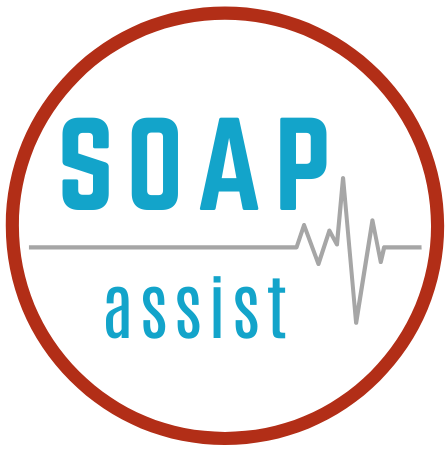There are really only two things that medical providers do when it comes to medical care, diagnose and treat. Every challenge that is not administrative can generally fall into one of these two groups. These two tasks are often quite challenging, each in their own way. This is why medicine has become so specialized. Knowing how to navigate problems and find their diagnoses and subsequent treatments can be an art as much as a science. When it comes to medical documentation, online medical templates can be oriented with these two tasks in mind. In this article, we will discuss how to create templates specifically oriented towards diagnosis or treatment so that your final soap note reaches its maximum potential.
The challenge of making any new diagnosis is keeping the differential in mind during the encounter. This sounds straightforward. However, it is difficult to interview a patient, take appropriate notes, and keep this differential in mind such that you are prepared to ask the next question. The significance of this task boils down to this: ask the right questions, get the right diagnosis. This is where a template comes in. Many providers operate off of templates even if they are not written down. They work through chief complaints by asking a set of questions in templated fashion to get to a diagnosis. For the more complex problems, having a written template to help navigate these chief complaints ensures that no question is left unasked and no differential diagnosis is left unconsidered.
Templates can be particularly helpful for navigating chief complaints that are not encountered every day. More obscure chief complaints like ear itchiness can be more difficult to develop a differential diagnosis for. A template can help navigate this problem.
A template can help you ask the right questions, but it is also a great means of simply listing a differential diagnosis. This list typically appears in the assessment and plan. The list can be organized into organ system categories. This often makes it easier to navigate on the spot. This list of differential diagnoses can also include a brief description of how each diagnosis presents. This serves as a reminder to the provider to make ruling in and ruling out various diagnoses easier.
Once a problem is diagnosed, it has to be treated. Some treatments are simple and straightforward, while others are more convoluted and have more steps. For some problems, such as hypertension, there are various treatments and medication classes. A template can be used to list all such groups of treatments. Additional details including side effects and exactly how a patient should administer medications can also be included in the template. This helps the provider navigate the various treatment options.
Many encounters are purely dedicated to follow up on an existing problem that has previously been diagnosed. Templates can be oriented exactly toward these follow-up appointments. They can include questions like medication adherence, efficacy of prior treatment, and which treatments have been tried before. This helps the provider have a good understanding of the status of the problem before treating.
Templates are reasonably short when they are geared toward either diagnosis or treatment. However, when an encounter requires diagnosis and treatment, a template can become rather long. It is reasonable for a template to be longer than the final product, but if a template is so long that it becomes cumbersome to read through or utilize, then it fails as a means of promoting efficiency.
This is where organization comes in. Differential diagnoses with their corresponding treatment plans should be organized in a way to prevent the user from having to read through each diagnosis in detail. Simply select the one you want and eliminate the rest. Utilization of appropriate headings and indentation makes this a more smooth process.
Whether you are diagnosing or treating, using an online medical template to create custom soap notes is an efficient way to document. When creating templates or adapting them to your practice, we recommend keeping in mind if an encounter is meant to diagnose a new problem or treat an existing one. This will maximize your efficiency with documentation.
Disclaimer: SOAPassist curated templates are created for use by licensed medical providers. While they are examples of what a provider might document, their intended purpose is to provide a starting point for documentation and do not constitute medical recommendations.

